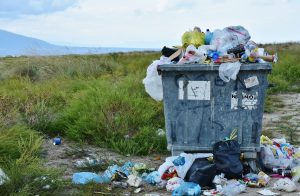 Our society had heavily relied on single-use plastic items such as plastic cups and surgical masks during the pandemic period.
Our society had heavily relied on single-use plastic items such as plastic cups and surgical masks during the pandemic period.
Nevertheless, these plastic items and mostly their disposal are one of the biggest issues of our modern world.
As food home deliveries have skyrocketed, marine and industrial plastics has also increased. Governments worldwide have to ensure effective waste management systems to keep pollution under control.
There’s on intention to belittle the help of single-use plastic in the fight against the pandemic that has shattered our world as we knew it. Frontline health workers have benefited a great deal from the use of such items. Also, single-use plastics have helped us to comply to social-distancing measures by allowing us to make use of home delivery of a wide range of goods, including food. Also, it may have contributed to flattening the transmission curve by getting us rid of reusable shopping bags and coffee cups that may have played a role in the transmission of the virus.
However, we’ve all seen images of huge piles of plastic sacks of medical waste nearby hospitals and used masks and other protective equipment floating in the ocean and polluting the world’s beaches. We need to be extremely careful, as the short-term benefits of single-use plastics can easily become a huge long-term problem and an even larger health hazard in the future.
It is also true that the rapid spreading of plastic waste has already been a concern before the COVID-19 pandemic. The United Nations and other international organisations have raised a red flag asking all governments to take immediate action. This is how some countries have started to implement taxes and even bans on single-use plastic items. Also, the biggest corporations have invested in switching to environmentally-friendly packaging for their products.
Today, the COVID-19 crisis threatens to cancel all progress and even to reverse the trend to a certain extent.
Even though nobody knows for sure how much additional plastic waste this pandemic has generated, preliminary data is overwhelming. In China, for example, estimations show that hospitals in Wuhan generated almost 250 tons of waste daily at the peak of the crisis, while in normal times this value was around 40 tons. Predictions show that the United States could produce a full year’s worth of plastic waste in as little as two months due to the pandemic.
Ordinary individuals have also increased their generated amount of plastic waste. Face masks alone account for a huge amount of waste that needs to be properly disposed of. People discard their used masks in public bins, as well as in household waste systems. Apparently, the daily production of face masks in China increased to 116 million in the beginning of the pandemic. This is more than ten times the value of any of the previous months. Home deliveries of food, also, have led to an increase of plastic waste from 1,500 tons to 6,300 tons per day. Multiply these numbers by the number of days of the pandemic and you’ll see the extent of the problem.
At the same time, social-distancing and confinements have led to many waste management services not operating at full capacity. This has only worsened the already bad situation.
However, governments need support to address this issue. The waste management infrastructure in many developing countries is already too poor to handle the normal amount of waste, let alone the pandemic-generated items. The COVID-19 crisis should be the turning point, the moment for cooperative action.
As global economy starts to recover, all organisations need to invest in building reliable and effective waste management solutions. Keeping plastic waste out of our waters is the way to improve our life and our overall health and well-being.
